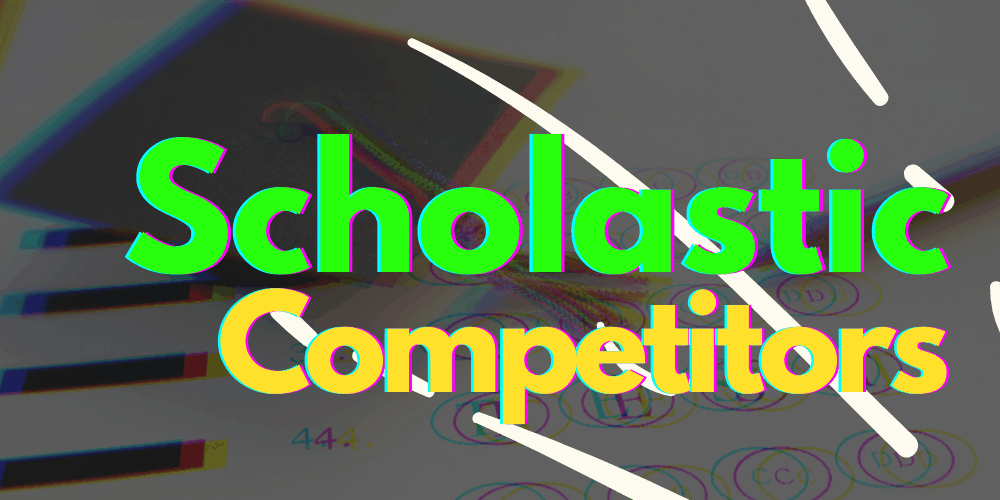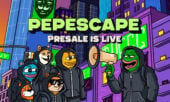Scholastic Competitors: Who Stacks Up Against this Publishing Giant?
Scholastic is a multinational corporation that deals in education, media, and publishing.
They are known for their range of workbooks, comics, books, and supplementary materials for schools.
The company was founded in 1920 in Wilkinsburg, Pennsylvania, but has since moved to its headquarters in New York, New York.

Scholastic is well known for its children’s books, and they sell their products online, through retail outlets, and directly at schools through fairs and reading clubs.
The company is publicly traded through NASDAQ under the ticker symbol SCHL and is also part of the S and P 600 Component, a stock market index.
The company reported revenue levels of $1.6 billion in 2016 and employs almost 9,000 people.
The business is split up into three divisions.
They have a children’s book publishing and distribution division and education and international divisions.
The company holds the publishing rights to popular book series such as Harry Potter and the Hunger Games in perpetuity.
Scholastic’s Biggest Competitors
Scholastic competes with other publishing houses for the custom of children and parents throughout the world.
They are a popular choice due to their strong connections with schools.
The company can drive revenue sales from book clubs and fairs that it helps to host at schools.
Scholastic also drives revenue from the sales of the books it owns the publishing rights to.
Alongside the ever-popular Harry Potter, Scholastic also owns the rights to Goosebumps, The Magic School Bus, Animorphs, and Captain Underpants.
Scholastic Media is another corporate division that covers all types of media.
Through this division, Scholastic has branched out into audiobooks and TV serials.
Their TV slate includes adaptations of Animorphs, Goosebumps, His Dark Materials, Clifford the Big Red Dog.
The media division is also responsible for producing films of their books and has been involved with the Goosebumps movies, Mortal Engines and Captain Underpants.
Now let’s take a look at Scholastic competitors and how they compare to the company.
Three major Scholastic competitors and alternatives are:
- Wiley – A publishing house specializing in academic books.
- Random House – A general-interest publishing house.
- Simon and Schuster – An American publishing house based in New York.
Scholastic Competitors: Wiley

Wiley is another publishing house that specializes in academic publishing.
Charles Wiley founded the company in 1807 and the company is currently headquartered in Hoboken, New Jersey. Wiley publishes their books worldwide and digitally.
They mainly focus on nonfiction topics such as medicine, professional development, tech, science, and education.
While Scholastic’s business is primarily aimed at younger ages, although not exclusively, the opposite is true of Wiley which is aimed at higher education, college, and university students.
The company has a similar total revenue as Scholastic at $1.7 billion as of 2017 with 5,1000 employees working at Wiley.
Wiley has expanded into new markets by establishing offices in Dubai, India, and Brazil.
They also entered the North African market through contracts with many academic institutions in countries such as Libya, Egypt, and Tunisia.
While Wiley and Scholastic do crossover somewhat with their sales and acquisitions, the two companies target different age groups in the same niche.
Scholastic Competitors: Random House
Penguin Random House is Scholastic’s biggest competitor and is the single largest ‘general-interest paperback’ publishing house in the world.
Random House was merged with Penguin to form the Penguin Random House LLC multinational conglomerate.
Random House began in 1927 when it was founded by Donald Klopfer and Bennet Cerf.
The company has its headquarters in New York City at the Random House Tower.
Since the merger with Penguin the combined company was responsible for around 25% of all book sales.
The company reported total revenues of $4.056 billion in 2017 and has over 10,000 employees.
The company is made up of 250 divisions and imprints that see it publish books across the world.
Penguin Random House has offices across the globe in the U.S, U.K, Canada, Australia, and Europe.
The company is larger than Scholastic thanks to the successful merger of the two businesses.
The company’s aggressive acquisition looks to continue as the company is looking to acquire Simon and Schuster which will give it a strong competitive advantage against Scholastic.
Scholastic Competitors: Simon and Schuster

Simon and Schuster are the third-largest publishing house in the U.S pending approval of the acquisition by Penguin Random House.
The company was founded by Richard L Simon and M. Lincoln Schuster in 1924 in New York City.
The headquarters is located in the Simon and Schuster Building.
The company publishes around 2,000 new titles each year and has 35 imprints under its name.
The company is split into several divisions that cover everything from adult publishing, children’s publishing, manga, foreign imprints, as well as audio.
Their audio businesses include language causes through the Pimsleur Language Programs and audiobooks through Simon and Schuster Audio.
The company is smaller than Scholastic and its revenue reflects this with reported total revenue of $814 billion in 2019.
What Is Scholastic’s Biggest Advantage?
Scholastic’s biggest advantage is significant relationships with schools through book fairs and book clubs.
The children’s book market is ripe with opportunity and by maintaining a close connection with schools, the company has direct access to consumer sales opportunities.
Scholastic is a publicly-traded company and therefore needs to answer to its shareholders.
This typically means a company tends to be more risk-averse.
However, Scholastic knows a good opportunity when it sees one, It acquired the U.S publishing rights to Harry Potter, which was famously passed on by Penguin.
The Harry Potter series has gone on to become the biggest selling book franchise of all time and even turned the author, J.K Rowling, into a billionaire.
Scholastic Competitors: Final Thoughts
Scholastic has developed itself from a simple publishing house into a multi-media corporation.
Although the company has courted some criticism from the sale of toys and video games to children, this is a company that has diversified its income and has had a successful string of hit series.
By taking a hands-on approach to its media design, the company can ensure that its properties are well translated from the book to the screen.
Scholastic may be facing fierce competition from the upcoming acquisition of Simon and Schuster by Penguin Random LTD, however, the company already owns the rights to some of the best-selling series of all time, thus making it a hard company to compete with.


 Tags:
Tags:










